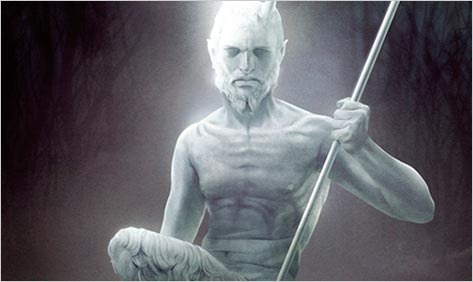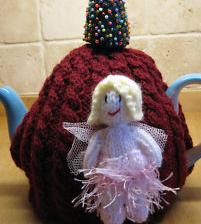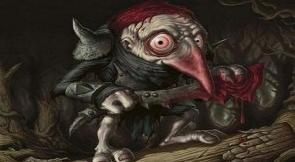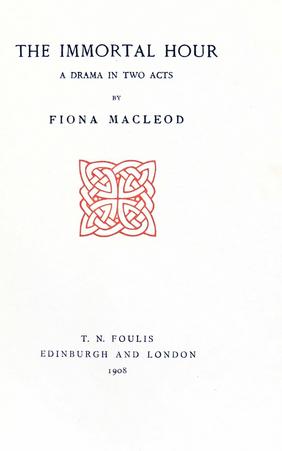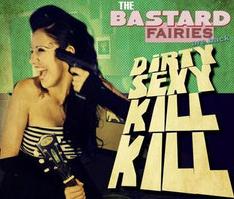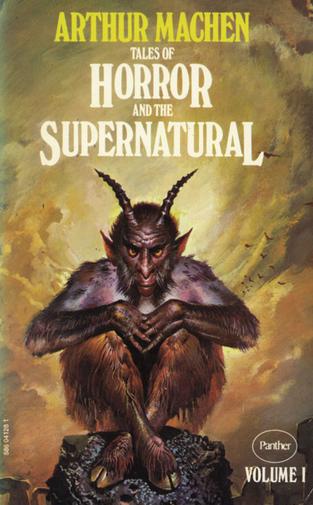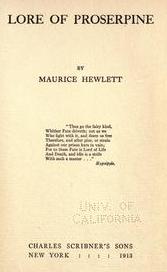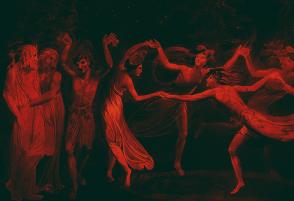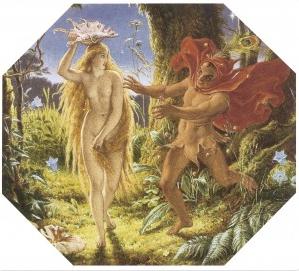
Consider this description of this fairy from Lewis Carroll: ‘[S]he seemed so good and gentle that I’m sure she would never expect that any one could wish to hurt her. She was only a few inches high, and was dressed in green, so that you really would hardly have noticed her among the long grass; and she was so delicate and graceful that she quite seemed to belong to the place, almost as if she were one of the flowers.’ Nauseating? Perhaps but we have to remember that the faries were emasculated by the Victorians and made into tea-cosies for various morality tales. However, in rural districts in Britain the memory that fairies could be dangerous continued well into the nineteenth-century; and in Ireland the memory is alive in places to the present day. It is there in the early and mid nineteenth-century folklore collectors like Thomas Crofton Croker and John Roby; it is even more evident in the fairy story-tellers who happened to get into print, William Bottrell (particularly his Selena Moor) and Thomas Shaw, to name two from a handful.
This memory of how dangerous and ambivalent fairies could be slowly fed through into nineteenth-century fiction, particularly as the century wore on and writers were getting impatient with all the tiresome bunk about progress and Rule Britannia. Perhaps the first to rebel against the cute Victorian fairy was that extraordinary early fantasy writer George MacDonald. The supernatural creatures he conjures into being are ambivalent and occasionally deadly: his books today are little read, but if anyone is interested at least the likes of Phantastes: A Faerie Romance for Men and Women (1858) can be picked up at Archive free of charge; ditto Dealings with Fairies (1867); At the Back of the North Wind (1871) and Lilith (1895).
Other Victorian writers were chipping away at the edges of the nursery fairy too. J.H.Riddell published the ‘Banshee’s Warning’ in 1867, banshees are by some estimates ghosts, according to others fairies. William Carleton, an unsentimental Irish writer published ‘Frank Martin and the Fairies’ in 1869, which describes the death of a child. It is unclear whether the fairies are to blame or whether they’re just predicting a family’s misfortune: in either case you come away from the tale with a nasty taste in the mouth. However, the most successful fusion of literature with frightening fairies belonged to another Irish writer Joseph Sheridan Le Fanu. He was responsible for one of the most sinister fairy tales ever written ‘The Child that Went with the Fairies’, first published in All the Year Round in 1869–1870. A child is, as the title suggests, stolen and let’s just say a lady in a coach makes an appearance: she will echo down through fantasy writing, in Le Fanu’s Carmilla and in a sledge in the Lion, the Witch and the Wardrobe. A lesser known Le Fanu story is ‘Laura Silver Bell’: this fairy horror is based in the north-east of England. It too doesn’t finish well: you are perhaps noticing a pattern…
This interest in traditional fairies would be continued by ‘Fiona MacLeod’, the pen name of William Sharp, a Scottish writer: Yeats by the way rated MacLeod but not Sharp as a writer! FM wrote a series of short stories where fairies are pretty damn scary: for example, The Washer of the Ford (1899). His greatest contribution though came in The Immortal Hour (1908), which would later prove the inspiration for the opera of the same name by Boughton. The story is not very scary, but Boughton’s reworking of it sometimes is. Laurence Housman’s Blind Love (1901) also owes something to tradition and that’s another story that finishes badly.
Grant Allen, a late nineteenth-century science writer opened up fairy horror with his short story, ‘Pallinghurst Barrow’ in 1892. AG had been inspired by the idea (one usually ascribed to David Mac Ritchie though it is actually a little older) that fairies were an earlier race of man. So far so good and the scene is set for a rumble in a local Neolithic Barrow. But then a ghost makes his appearance and the whole thing gets a little muddled. It would be other late Victorian and Edwardian writers who picked up the baton that had been fumbled to the ground by GA. John Buchan’s ‘No Man Land’ represents perhaps the pinnacle of the genre in 1902. However, already back in 1895, a year after the Great God Pan, Arthur Machen was continuing to experiment with the idea that fairies were a race apart and perhaps not even strictly supernatural in ‘the Shining Pyramid’, the ‘novel of the Black Seal’ and ‘the Red Hand’ (1895: the last a parody of Conan Doyle?). Then just in case you think that folklore was no longer feeding through remember that this was the year that Michael Cleary burnt his wife Bridget in Tipperary because she was a ‘fairy’…
Machen’s early ‘fairy tales’ are excellent horror fodder, but perhaps his greatest success and arguably the greatest success for the entire fairy horror genre was ‘The White People’ in 1904. Admittedly fairies are in short supply – actually they are not that visible in his earlier work either – but there are peculiar beings that impinge on the imaginings of a child and that seem to belong to the not-so good people. This is another story that doesn’t end well: perhaps there is no other genre of literature where children suffer so much? Machen also wrote a further fairy horror, ‘Out of the Earth’ in 1915 and, then, a strange fairy essay in 1922 about African fairies: poor old AM even his essays leave your mouth dry… Later, there was the ‘Change’ (1936), more children I’m afraid and that just about finished Machen off.
Machen had no doubt in his mind that fairies were ghastly little blighters. If you find his one-sided dislike of the fey a too much then why not turn instead to Algernon Blackwood, who wrote a number of fairy horror stories? May Day’s Eve (1907), Entrance and Exit (1909), Glamour of the Snow (1911), the Goblin’s Collection (1914) and Trod (1946) among others. In none of the stories are fairies unambiguously evil and in May Day Eve and Entrance and Exit there is a real sense that contact with fairies lead to rebirth and progress in an individual’s life. However, therapy it isn’t – no couch, no glass of water, no tissues… – and the fear factor is there throughout. Blackwood’s heroes are walking across a sword bridge and there are snapping crocodiles in the river below. It is tempting to compare Blackwood to Maurice Hewlett’s Lore of Prosperine (1913) that purports to be the psychic experiences of the author in a lifetime of communication with the fey. The truth is that Hewlett is an outstanding writer, but his interest in fairies doesn’t really convince: there is the suspicion that he is playing out. He is clear though that fairies are cruel: one of his first descriptions is of a fairy child squeezing a rabbit to death.
A more successful version of Maurice Hewlett, though he is scandalously neglected, is the brilliant Bernard Sleigh. Sleigh wrote in 1926 the Gates of Horn (1927) a series of fairy short stories. Fairies chez Sleigh are perhaps better balanced, personality-wise, than in Machen. They are above and beyond human interests and lash out if they feel that they are attacked or if they find someone attractive. There is horror, there is danger and there is also a strong sexual charge that must have been rather shocking in the late 1920s. Sleigh also published a later short story, The Dryad’s Child (1936) where yet another child dies: though Sleigh argues that she is happy among the fairies. Sorry for these spoilers.
By the 1920s there was, in any case, a tradition of fairy horror stories and this tradition was rich and well-established. Indeed, H.P.Lovecraft, in his, ‘Lurking Fear’ is clearly following the trail lain down so effectively by Machen’s early fairy writing. And in the ‘Whisperer in the Darkness’ (1931) Lovecraft acknowledges his debt to Arthur Machen, putting praise into the mouth of the story’s hero. Lovecraft’s and Machen’s take on the fairies would be taken on into the 1930s by Robert E.Howard (though with a strange medieval twist) and the 1950s by Manly Wade Wellman with the Shonokins.
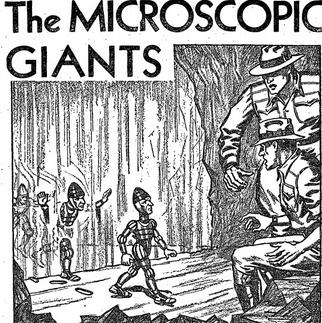
However, there was also room for innovation. Francis Stephen’s ‘Elf Trap’ (1919) is a warning against falling in love with an elf woman: but it written with great humour and humanity. Abraham Merrit adds a ‘green’ dimension to fairy horror (that is already sprouting in Sleigh) with the ‘Woman of the Wood’ (1926). Likewise, M.R.James ‘After Dark in the Playing Field’ (1924) is able, with his one fairy horror, to return to the traditional preoccupations of a rural English population of a century before: it is in many ways a grown up version of his Five Jars, his fairy story for children. Finally, science fiction starts to make use of the little folk. The first example is perhaps Clark Ashton Smith’s ‘Dwellers in Martian Depths’ (1933) then there is Paul Ernst and ‘The Microsopic Giants’ (1936): we are moving all the time towards Ewoks – the late twentieth century also had a tendency to niceify everything.
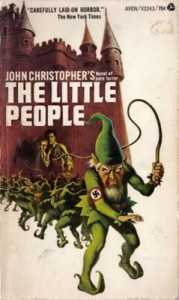
And, in fact, after the Second World War fairy horror for the most part fails. There is John Christopher’s The Little People (1966) with its embarrassing combination of elves, Nazis and sex: it did produce one of the most notable book covers in history though (see above). T.E.D Klein’s Children of the Kingdom (1985) is set in a New York blackout! There is Steve Szilagyi’s Photographing Fairies (1995) which combines Cottingley and sex. Steve Cockayne (1006) The Good People, which introduces Arboria. Then there is Graham Joyce’s Some Kind of Fairy Tale (2012), which is the changeling myth with a strong charge of sex. Sex, in fact, from Sleigh onwards slowly pushes the fairy Geiger counter up. What is striking is, first, how talented most of these writers are and, second, perhaps how they are not really trying to write horror any more. For example, another fairy horror work is Graham Joyce’s The Tooth Fairy. But is it a horror story at all: perhaps it would be truer to call it a coming of age tale? Perhaps, indeed, most of these other ‘horror’ stories should actually be classed with Warner’s Kingdom of Elfin (1977) as adult fairy fantasy. Still, what a pity that horror has been left to cinema and the dreadful Leprechaun series? If there is any hope it lies with Eddie Lenihan whose Meeting the Other Crowd is almost certainly the scariest fairy book of the last fifty years: and how does he do it? He returns to folklore…
